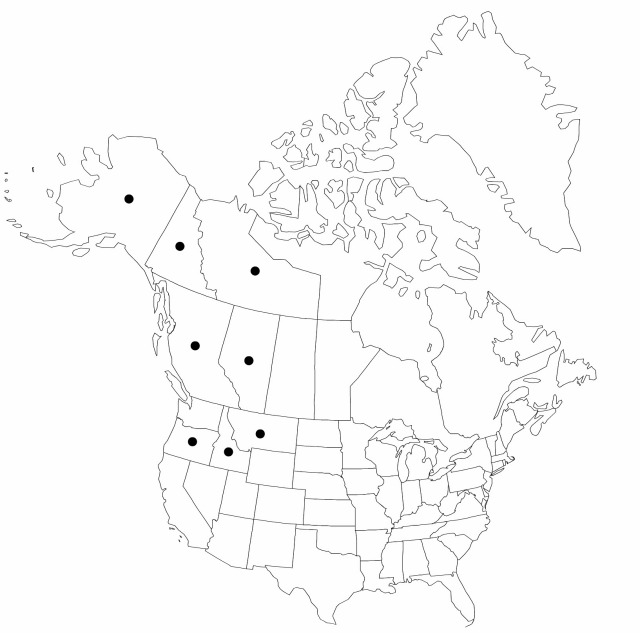Carex podocarpa
in J. Franklin et al., Narr. Journey Polar Sea, 751. 1823.
Culms 5–60 cm. Leaves basal and cauline; proximal leaves reduced to sheaths; distal leaves with blades 3–6 mm wide. Inflorescences: spikes separate, elongate, 6–20 × 5–8 mm; lateral spikes 1–3, pendent, long-pedunculate. Pistillate scales dark brown or black, margins occasionally narrowly hyaline, midvein seldom prominent, same color as the body, inconspicuous, broadly lanceolate, shorter than or equaling and as wide as perigynia, apex acute. Perigynia brown or purple-brown, veinless, ovate, 3–3.5 × 1.75–2 mm, papillose; beak 0.3–0.4 mm, shallowly bidentate or truncate, sparsely papillose or smooth.
Phenology: Fruiting Jun–Aug.
Habitat: Subalpine and alpine meadows, arctic tundra
Elevation: 10–1800 m
Distribution

Alta., B.C., N.W.T., Yukon, Alaska, Idaho, Mont., Oreg., Asia (Russian Far East).
Discussion
The name Carex microchaeta has been misapplied to specimens of C. podocarpa. Within sect. Scitae, C. podocarpa is the only species having all the lateral spikes pendent and long-pedunculate.
Selected References
None.
